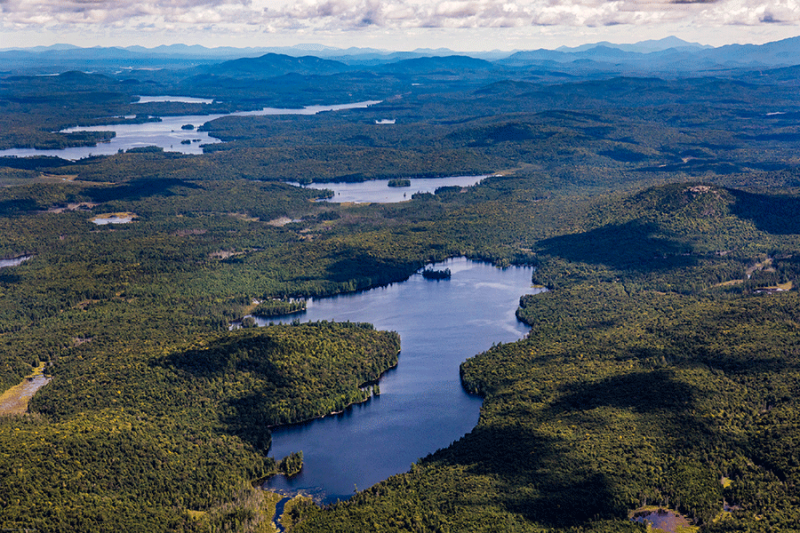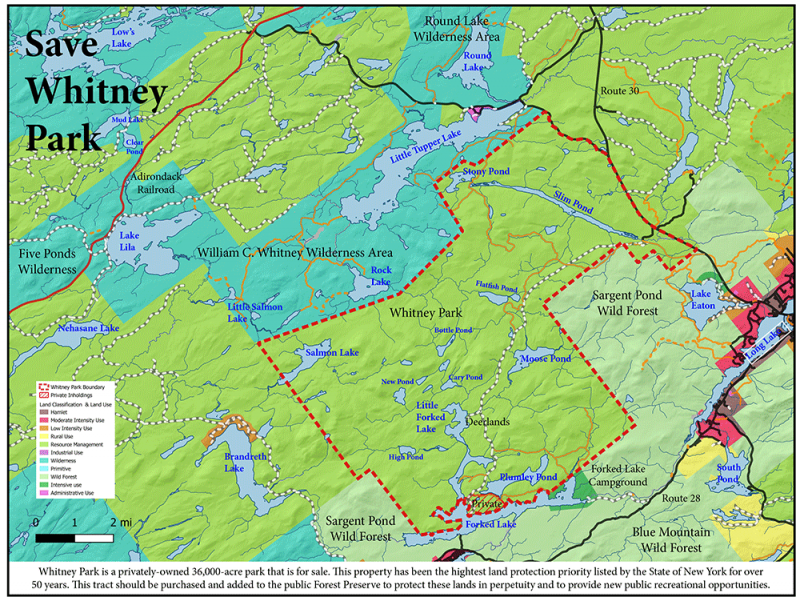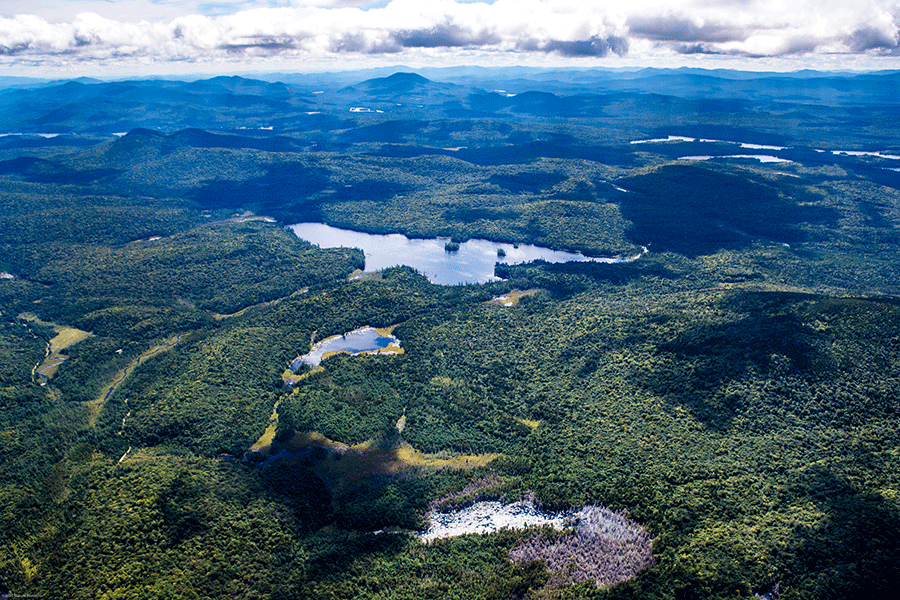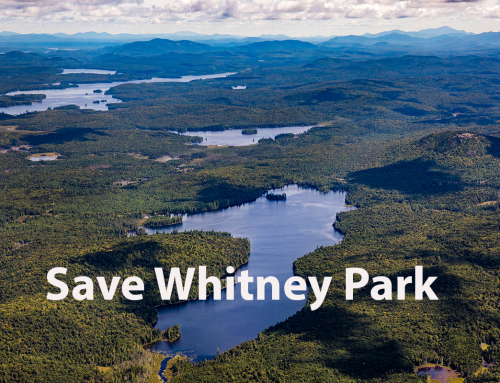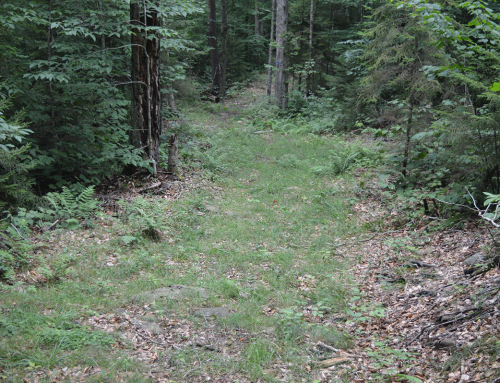The future of Whitney Park, long the top target for protection by the State of New York, is in flux after the sudden and unexpected passing of its owner.
The future of Whitney Park, an extraordinary tract of mostly undeveloped forestlands in the central Adirondacks in the Town of Long Lake is now in sharp focus after its owner, John Hendrickson, died suddenly at age 59 in August. Hendrickson was married to Mary Lou Whitney for 22 years, who had inherited Whitney Park from her first husband Cornelius Vanderbilt Whitney, who was active in social and charitable cause sin Saratoga Springs and across the country. Whitney Park was part of a constellation of properties owned by the Whitney family and upon Mrs. Whitney’s death, Hendrickson became the sole owner.
The 36,000-acre Whitney Park includes 22 lakes and ponds and contain over 100 miles of undeveloped shoreline. Whitney Park has been at the top of New York State’s land protection priority list for 50 years. Over the decades, the property has been lightly developed by the Whitney family, which maintains a large complex of buildings in a mountain estate called Deerlands on Little Forked Lake, and two inholdings totaling around 400 acres on Forked Lake and Plumley Pond at the south end of the tract.
In the mid-1990s, Mary Lou Whitney sold the 14,700-acre area around Little Tupper Lake to the State of New York. Governor George Pataki played a lead role in negotiating this deal. The Whitney family made it quite clear to the Pataki Administration that they wanted Little Tupper Lake classified as Wilderness once it was sold to the state (see map below). Governor Pataki pushed through a Forest Preserve classification that combined Lake Lila, then a Primitive Area, with the 14,700-acre Little Tupper Lake tract to create the 20,000-acre William C. Whitney Wilderness area.
The State of New York is currently working to update its Open Space Conservation Plan. Various regional advisory groups are working on developing acquisition priorities for their areas of the state. Protect the Adirondacks submitted detailed comment letters with recommendations to the two committees working in the Adirondack Park. Click here to read our letter to the Region 5 Open Space Committee, which covers the central and eastern Adirondacks. Click here to read our letter to the Region 6 Open Space Committee, which covers the western and northwestern Adirondacks. Protect the Adirondacks has called for Whitney Park to be protected as Forest Preserve.
In 2022, Governor Kathy Hochul signed the “30 by 30” law that established a conservation goal for New York State of protecting 30% of the state’s “lands and inland waters” by the year 2030. The 30 by 30 law commits New York to do its part to reach a similar national goal established by President Joe Biden in 2021 to protect 30% of the nation’s lands and waters by 2030.
On July 1st, the New York State Department of Environmental Conservation (DEC) and Office of Parks, Recreation, and Historic Preservation (OPRHP) released their draft “strategies and methodology” for conserving lands to meet the goal of the 30 by 30 law. DEC calculates that to date New York has conserved around 22% of its lands and called for protection of an additional 2,836,161 acres in order to reach the goal of protecting 30% of the state’s lands and inland waters. The report stated that the Hochul Administration and state environmental agencies need to protect at least 2.83 million acres in order to meet the State’s 30 by 30 goals.
So far, the 2020s mark a low point in land protection in New York’s history. From 2019 to 2024, just 43,000 acres were protected across the state. The combined administrations of Governor Andrew Cuomo and Governor Kathy Hochul have protected an average of 15,100 acres per year. Land protection has not been a focal point to date for Governor Hochul or her administration. One recent success was the 15,000 conservation easement over Follensby Pond, but even that landmark deal at the current rate of land protection under Governor Hochul, it will take New York State over 180 years to meet its 30 by 30 goal.
The future ownership of Whitney Park has not been stated publicly. According to his obituary, Hendrickson is survived by his mother and a brother, sister in law, and a niece and nephew. More information should be forthcoming in the weeks ahead.
In another post we make the case for why Whitney Park should be protected in perpetuity as part of the public Forest Preserve.
We also encourage people to sign our petition to Governor Hochul urging her to purchase and protect Whitney Park.


